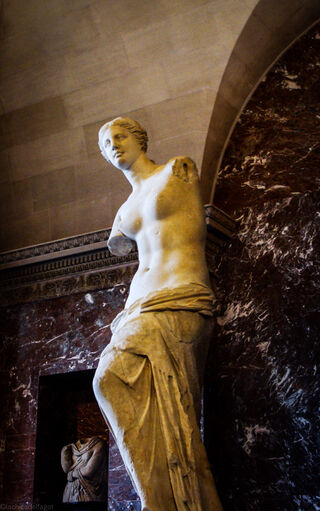Grief
Joy and Its Connection to Grief
Lessons from Freud and Rilke.
Posted December 10, 2021 Reviewed by Lybi Ma
Key points
- Transience is part of what makes something beautiful.
- The experience of transience carries with it the emotion of sadness.
- When one cannot let go, there is difficulty in mourning.
- When there is complicated grief, the self develops defensive strategies against feeling sorrow.

Transience is an idea Freud wrote about in a brief essay when two of his sons were fighting in World War I (1915). He describes a summertime walk with the poet Rainer Maria Rilke, who was admiring the natural beauty of the landscape “but without enjoying it,” Freud noted.
Rilke’s delight was troubled by the thought that the blooming countryside around them would die away. The poet laments the loss of nature and all the glories of human sensation. His melancholic tone is reflected in his philosophical poems, the Duino Elegies, begun a few years earlier, which take up themes of time and eternity, existential suffering, and beauty. Despite the poet’s gloom, Freud rejects his notion that the transience of the flourishing landscape makes it less valuable. To the contrary, he says “rarity in time” makes something more precious.
Freud admits sadness is part of the experience of transience, as one may recognize in the face of an aging parent or as one watches one’s own youth fading. He suggests Rilke’s pessimism is due to difficulties in mourning and the inability to let go. Mourning helps one overcome loss, although the process of grieving may never be totally complete. Three years later, Freud would explore this psychological dynamic in his essay Mourning and Melancholia (1918), which describing how people become stranded in a complicated grief that interferes in daily living, consumes one’s energies and compromises one’s sense of self. Frozen mourning is loss that has not been recognized and worked through.
A poem called Loss by David Wagoner says: “Wherever you are is called Here, and you must treat it as a powerful stranger.” We must be with grief in a spirit of gentleness.
With the refusal of grief various defenses take hold. A person may default to a false version of self. Blocked mourning can also be defensively reversed by entering a realm of wishful omnipotence and obsessional control, shaping others according to one’s own needs. As psychoanalyst Paola Golinelli says, unresolved survival can become “linked to the invention of a universe that swings from omnipotence to impotence.” Chronic anger frequently covers over a harder-to-accept sadness, as well.
Freud wrote that transience or the brevity of organic life is also the reason for its beauty. Put another way, one’s capacity for joy is directly related to one's ability to grieve.
Italian philosopher Umberto Ecco says transience is part of the pleasure in our contemplation of a work of art, too. He takes The Venus de Milo as an example, one of the most popular art objects of the Western world. What is it about this figure prominently displayed at the Louvre that compels? What do humans see in this half-naked, armless goddess?

Ecco noted this statue draws us in because her arms are missing, it is both a figure of idealization and ridicule. (For an ironic take on this cultural icon see the controversial thriller Boxing Helena, about a lonely surgeon who, obsessed with a former lover, surreptitiously amputates her limbs in his home and holds her hostage.)
Ecco notes the statue, though marble, highlights human mortality, and our vulnerability to time. The mystery behind the figure’s magnetism is what he describes as an aesthetic of ruins: “The work can be enjoyed not only in spite of but thanks to its deterioration. And that's why we like the Venus de Milo as it is, more than if it had those useless arms of hers. It speaks to us not only of its formal beauty, which we can easily reconstruct but of the lost world it comes from.” Ecco, like Freud before him, agreed that beauty emerges from the ephemeral.
Through aesthetic experience, the artist tries to make meaning of the problem of human transience, our existential woe. All living things move toward an end, to die before one's eyes and then consume the viewer: Each living thing singular, unique—and without substitute.
Rilke felt that art could be a bridge between the two worlds of the material and spiritual, and cast light on the mystery of human suffering. “Beauty is the beginning of terror that we are just able to bear,” he writes in his Duino Elegies, which he completed after the First World War, writing with inspiration, he described as "a savage creative storm.” His thoughts were enriched by a summer walk through the countryside.
References
Ecco, U. (2021). Perché è così bella la Venere senza braccia / Il fascino della Venere di Milo," la Repubblica.it, 07, 07.
Freud, S. (1915). On Transience, SE, 14, GW, 10.
Golinelli, P. (2021). Psychoanalytic Reflections on Writing, Cinema, and the Arts; Facing Beauty and Loss. London and New York: Routledge.


